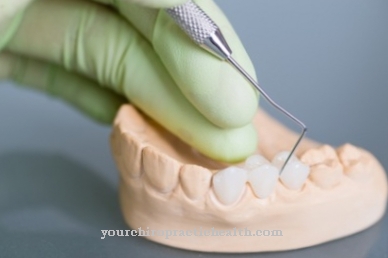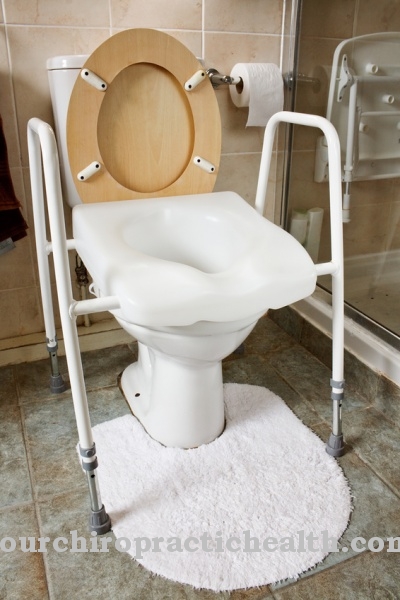Medical plastic is bio-resistant and bio-compatible plastic. Plastic is used today in prosthetics as well as in device manufacture or surgery. The individual types range from tartaric acid polymers to silicone resins.
What is medical plastic?

The medical use of plastic begins in the 20th century. The triumphant advance of plastics began in the 1950s and as early as the 1980s the artificially created material replaced steel as the primary material. Celluloid is the best known and earliest plastic, which was mainly used as a substitute for ivory.
Even before the plastic revolution, the American made fine bloom contact lenses from PMMA plastic. Around the middle of the 20th century, Ridley implanted the first PMME intraocular lens. After the Second World War, plastic also found its way into prosthetics. Cannulas, infusion bags and disposable syringes have also been made of plastic since the 1960s. One of the latest developments revolves around medical plastics in the nanotechnological field.
The term medical plastic is primarily aimed at biocompatibility as a property. Medical plastics are now available in different variants. They are all directly and indirectly harmless to health. Resistance to the biological environment is also one of its characteristics.
Shapes, types & types
Medical plastic is used for implants, solution containers, medical devices, and disposable items such as tips. Plastics particularly score points in these areas when it comes to hygiene. They enable an even more sterile environment.
This applies, for example, to the antimicrobial grades of medical plastic. These plastics are a special form of medical plastic. The antimicrobial properties of these grades significantly reduce the risk of infection by germs in the medical field. Today, thermoplastics are designed to be antimicrobial using metal salts or silver ions, for example, and are thus self-disinfected.
Chemically resistant silicone resins and polyamide, on the other hand, have established themselves as medical plastics in prosthetics and orthotics because of their health compatibility and stability. Another example of the plastics revolution in the medical industry is nanotechnology. With the help of this new development, not only coated implants, but also antimicrobial surfaces can be produced. In the future, nanoparticles can even be used as carriers for medical active ingredients and thus transport drugs through the human body.
Structure & functionality
Various properties are decisive for medical plastic. Above all, it is about biocompatibility. Every plastic used for medical purposes must therefore be compatible with the human organism in direct and indirect contact. It must also be resistant to the environment within the organism if it is to be integrated into the body. Chemical resistance is another requirement as plastics in the medical field come into contact with disinfectants and acids. Additional factors play a role for prostheses. For example, knee or hip joints made of plastic must be abrasion-resistant so that they can withstand the high loads during movement.
Today, plastics can be used to straighten, but also fulfill supporting functions in the human body and, for example, replace the abdominal wall. Artificially produced materials with a certain stability, but also flexibility, can also help with the correction of deformations. The functionality of moving parts of the body can be supported and now even restored by specially made plastics.
Medicines are now also administered in plastic capsules. These capsules ensure that the active ingredient has a longer shelf life and is not contaminated. In the human body, they dissolve in a precisely defined period of time and release the active ingredients of the drug to the organism.
The type of medical plastic therefore varies depending on the medical field in which the material is used. For example, drug capsules are often made from tartaric acid polymers. In contrast, self-dissolving threads made of plastic are usually made of polylactic acid, a polyester of naturally occurring lactic acid. These threads decompose enzymatically in a precisely adjustable time.
You can find your medication here
➔ Medicines for painHealth benefits
Without plastic and the processing of this material in medical technology, the current health care system would be a long way from where it is today. Plastic is largely responsible for the fact that hygienic standards can now prevent infections. Apart from that, it was only plastics that ensured the reliability, mobility, compatibility and stability of prostheses, orthotics and epitheses of today's prosthetics.
Examples such as that of Michael Teuber show just how important plastic is in prosthetics and orthotics today. When his legs were paralyzed after a traffic accident, he was given orthotics made of polyamide. At the Paralympics, these orthoses helped him get on the podium. In prosthetics and orthotics, medical plastics particularly score with properties such as their light weight. The prosthesis wearer is less restricted in their mobility than with prostheses made from other materials.
In surgery, too, plastics are now indispensable instruments for compensating for organic damage. Heart valves can now be replaced by plastic valves, for example, which can save lives.
When it comes to medical devices, plastic has irreplaceable benefits for the medical field and the entire healthcare industry. Devices such as dialysis machines would hardly work without plastic, for example. In short, modern medicine would not do without medical plastic. A part of medical progress that should not be underestimated is therefore attributable to the use of plastics.

















.jpg)







.jpg)


